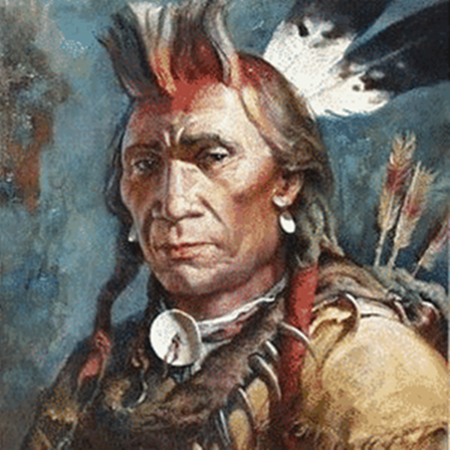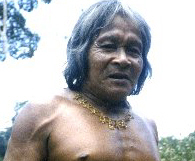Hair Face Body Painting
The Amerindians, that we know as the Arawaks and Caribs, at the time of European contact were of good stature, well proportioned, strong and robust. Their natural color was a very bronzed olive. The Amerindians never wore clothes; they sometimes wore a belt that hung in front with windings attached to the men's private parts. The women wore a cotton band four fingers wide. Sometimes the unmarried women wore a skirt or apron.

HAIR: The hair was worn long with a fringe near the eyebrows. A parting was made across the head from temple to temple, leaving two small moustaches over the temples. Before the Amerindians travelled, the women combed the men's hair and greased it with oil to make it shine and look blacker. Colored feathers were sometimes stuck into the bundled hair. At the back, their long black hair fell freely in graceful negligence. Slaves were not allowed to wear long hair.
 FACE: Often the forehead was flattened for good looks. Carib babies had their head flattened with boards or cushions or by the mother placing her hand and elbow on the head and sleeping on them. Ear-disks made from modified fish vertebrae were worn in the lobes of the ears.
FACE: Often the forehead was flattened for good looks. Carib babies had their head flattened with boards or cushions or by the mother placing her hand and elbow on the head and sleeping on them. Ear-disks made from modified fish vertebrae were worn in the lobes of the ears.
ADORNMENT: Necklaces were made of seashells and with transparent fish bones. Often wings of various birds were worn around the neck, which they let dangle over their shoulders and over their bellies. Other times a whistle made from the bones of their enemies hung around the neck.
At the feet little bells of seashell were worn to ring while dancing and the women wore a little sash with bells attached. The rattle of snail shells accompanied dances on strings that dancers wore around their arms, hips, calves and heels.
 BODY PAINTING: Every day Amerindians reddened their bodies with a mixture of roucou and castor oil. It was believed this would please their enemies and that they would have nothing to fear if they took this precaution. After painting their husband's body with roucou the wife wiped her hands on her leggings to stiffen them.
BODY PAINTING: Every day Amerindians reddened their bodies with a mixture of roucou and castor oil. It was believed this would please their enemies and that they would have nothing to fear if they took this precaution. After painting their husband's body with roucou the wife wiped her hands on her leggings to stiffen them.
For fine black paint to be used for facial painting, gum was burnt from the root of the gum tree. Men often stood for twelve hours while his wife drew curves and lines from shoulders to buttocks. She also covered the back, arms and chest with fanciful lines, which were not unpleasant to look at. This decoration was made for warfare and for feasts.
 Skip Nav
Skip Nav